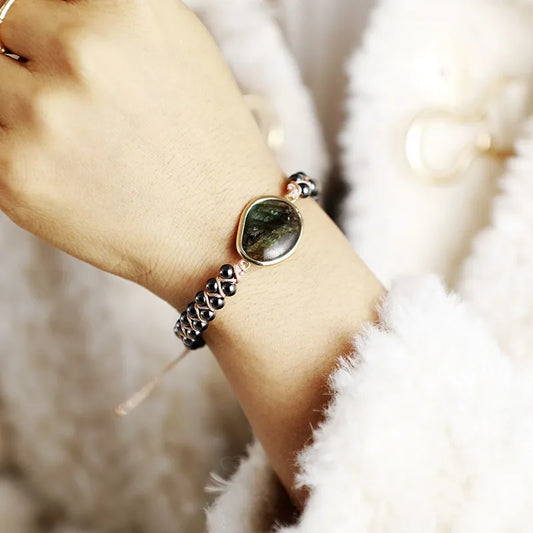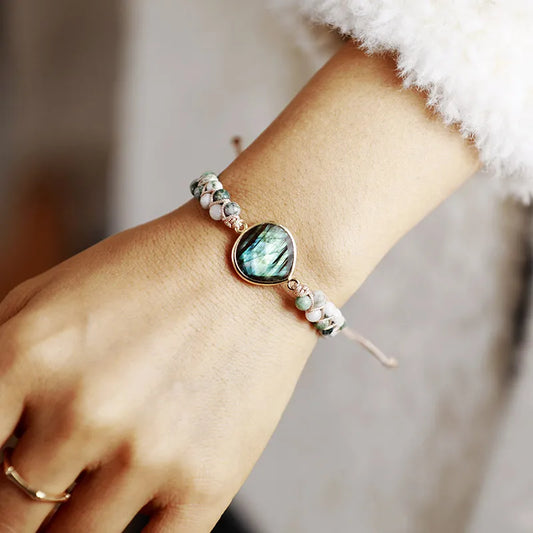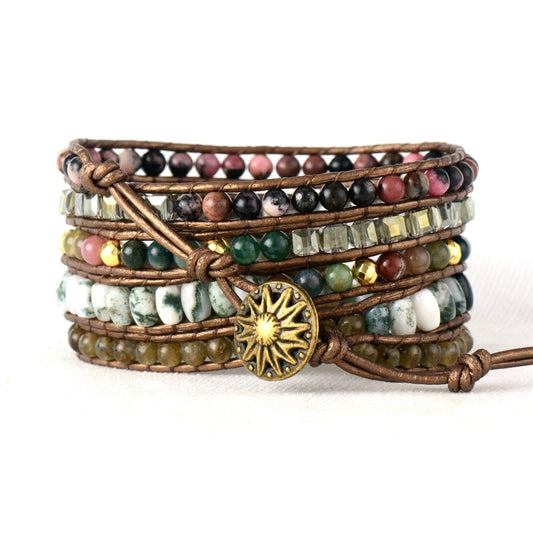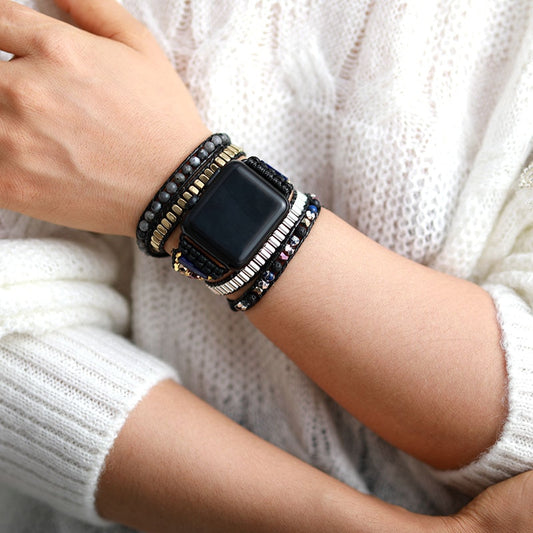Labradorite is a plagioclase mineral. Plagioclase minerals are feldspars that range from pure albite to pure anorthite. Labradorite falls into the 50-70% anorthite category with a 50-70% calcium to 30-50% sodium structure.
It boasts some of the most eye-catching light displays in the gemstone world caused by lamellar twinning inside the crystal. These twin lamellae structures are compatible at high temperatures, but not at low temperatures, resulting in separation and layering as the gemstone is formed. The extra colours you see in labradorite are caused by refracted light traveling at different speeds through the layers and coming out as a different wave length.
Labradorite is one of the stones that don’t belong to the traditional birthstone chart. It doesn’t belong to the modern chart either and it is not one of the main Zodiac stones. However, some sources associate Labradorite with the Zodiac signs of Sagittarius and Scorpio, as well as Leo in more recent interpretations.
Labradorite History & Legends
Ancient Inuits believed that Labradorite was the frozen fire of Aurora Borealis. The legend says that an Inuit warrior found Aurora Borealis embedded within the rocks inside a cave on the shoreline of Labrador, Canada. He struck the rocks with his spear attempting to release Aurora Borealis but was unable to remove it all, leaving some of the light imprisoned in the rocks forever. The native inhabitants used the gemstone for medicinal purposes as they believed that it would increase their energy as well as reducing stress and anxiety.
The stone was first discovered in Labrador indeed, on the Isle of Paul, however, not from the Ancient Inuits but by Moravian missionaries and not until 1770. The Moravians were the first that saw the potential in the gemstone and sent it to the Moravian Mission secretary in London and soon after it became popular in England and France.
In Norse mythology, Labradorite was associated with the 'Bifrost Bridge', a burning rainbow bridge which joined 'Midgard' (Earth) to 'Asgard' (the realm of the Gods) – a gateway between Earth and Heaven.
Labradorite Healing Properties
Labradorite is considered one of the most powerful gemstones, hence it is called the "Stone of Transformation". With it's expansive array of colours, it is linked to three Chakras - the Throat Chakra (expression, communication), the Third Eye Chakra (awareness, intuition, thought) and the Crown Chakra (spirituality, enlightenment).
It has always been associated with shamanism, mysticism, and magic. It has been a tool that healers have turned to and many are drawn to its heavenly aura and ability to tap into the different states of consciousness.
Labradorite is also considered a powerful protector, creating a shield against negativity and calming the monkey mind, preventing our thoughts to jump from place to place. While it brings clarity and helps find focus, it boosts imagination and unleashes the creativity energy.
When it comes to physical healing, Labradorite is believed to help with eye disorder treatments as well as with regulating blood and lowering pressure. It also helps reduce physical pain, colds, coughs, gout, respiratory problems, digestion issues, metabolism and reduces stress, anxiety, depression and tension.
Labradorite promotes self-confidence, self-worth and determination. It aids those experiencing traumas or emotional breakdowns and consists of energy-boosting powers to give more strength, courage, focus and a goal-oriented thinking.
Labradorite boosts imagination and the creation of new ideas, bringing clarity and peace to the inner self.

















